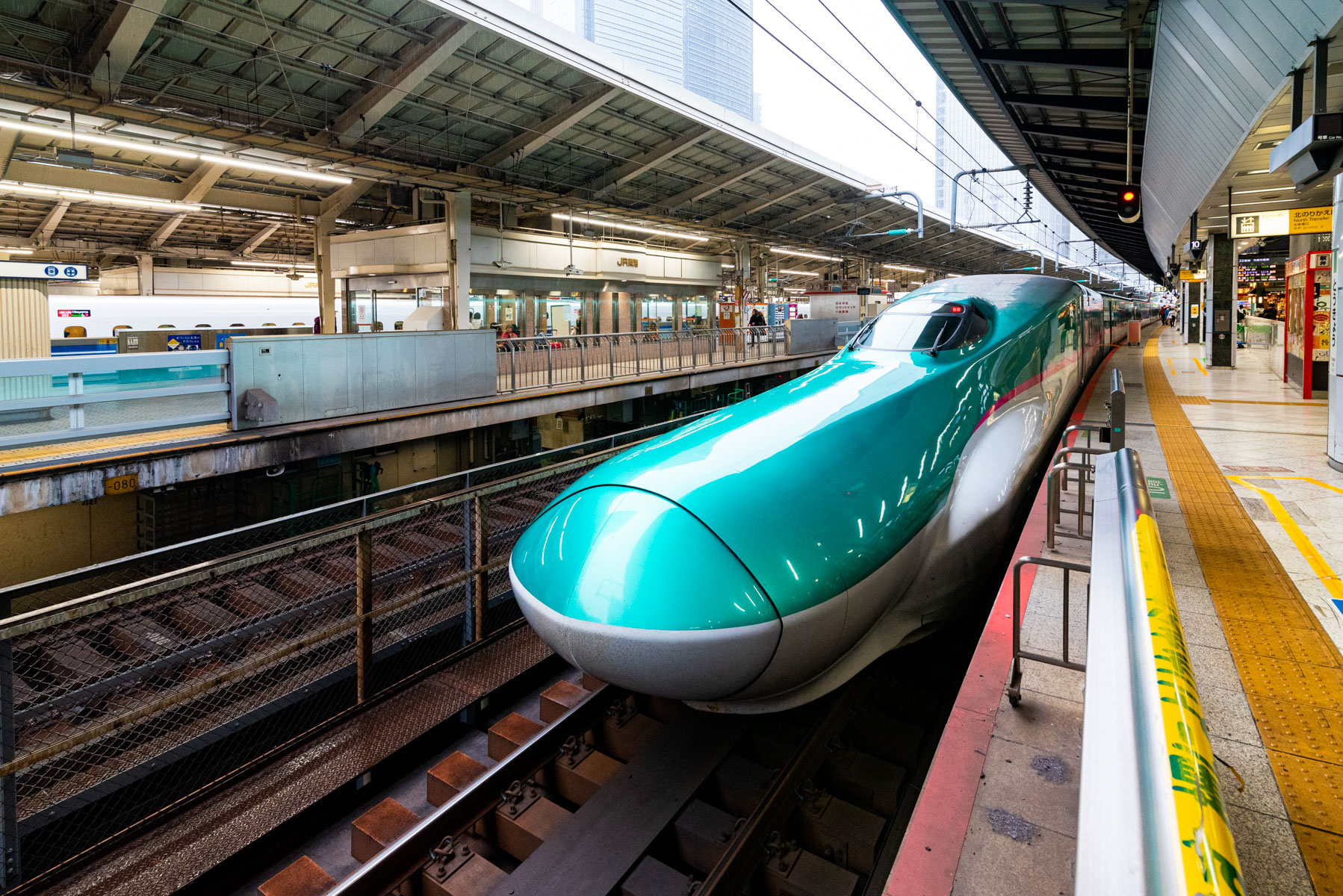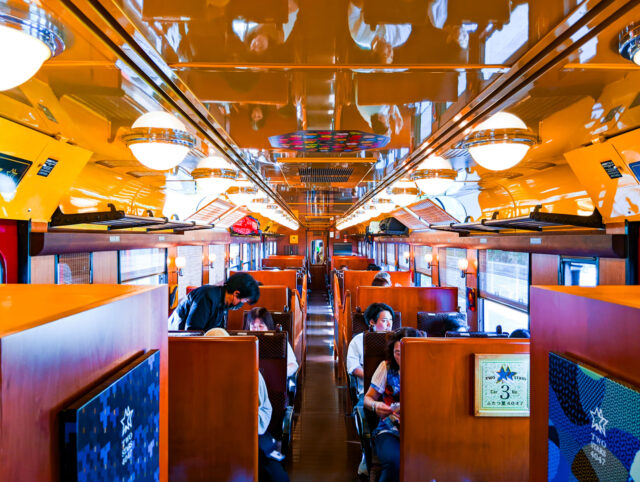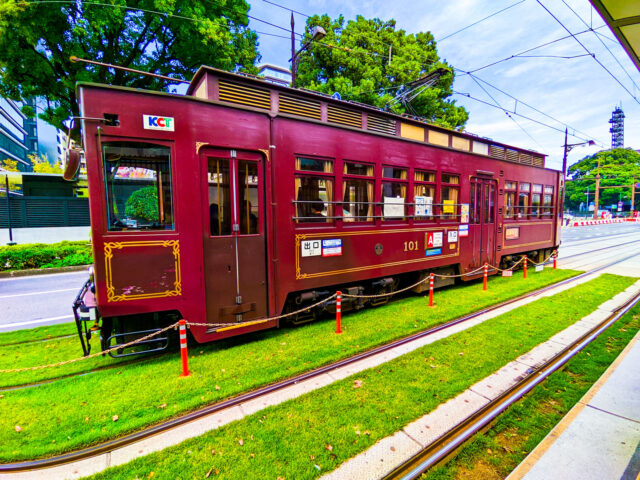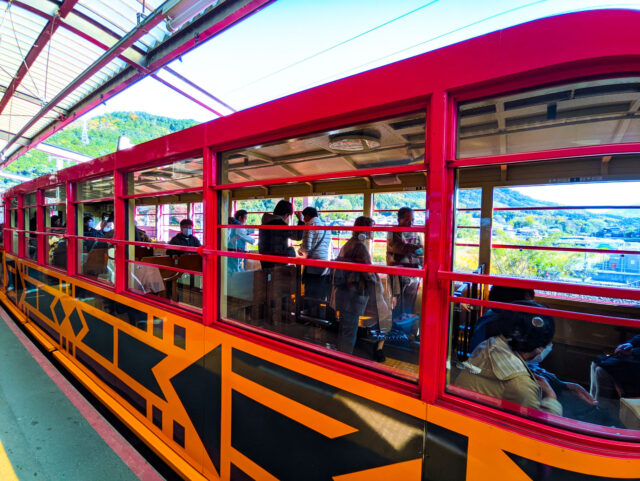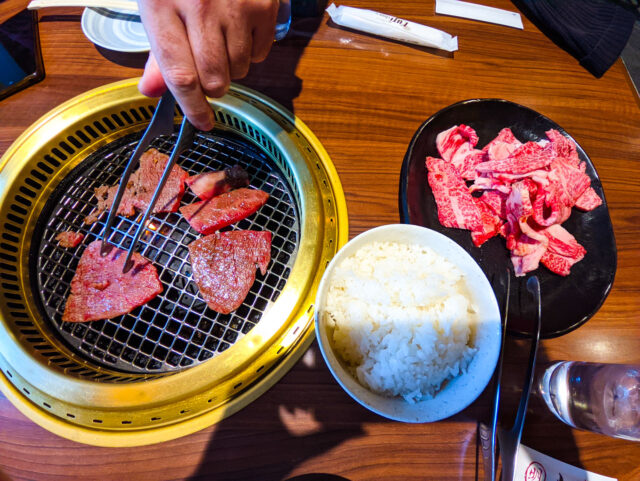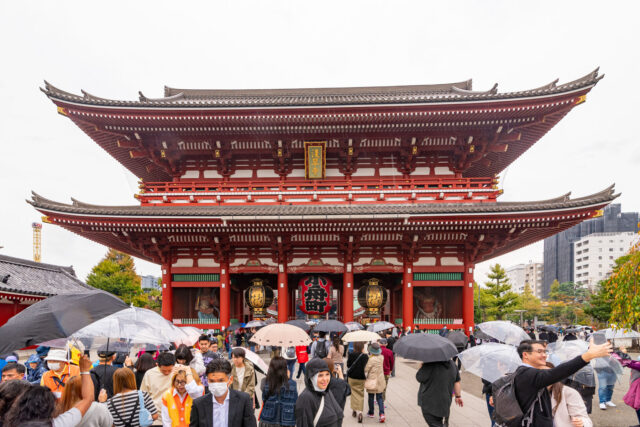Quick heads‑up, fellow travelers: Hit the Road Ket contains some affiliate links. Book through them and I earn a small commission at no extra cost to you – fueling my caffeine fix and future travels! For more details, see my Disclosures.
Japan arguably has the best public transport system in the world. I highly doubt any other country can compete. While not every remote area in the country is served by trains or buses, it is amazing how extensive the network is. A wonderful example is the true story of a train in Hokkaido, which ran for just one passenger for years:
Public transport in Japan is a whole new level of attraction, which you absolutely can’t miss. Even if you are a car-enthusiast planning to hire a car to get around the country, do take a train at least once – you won’t regret it.
With my love of trains, you can imagine, how excited I was to visit this transport paradise. I am now well versed in using public transport in Japan and want to share my tips with you. From bullet trains that zip you across the country in a few hours, to well-organized buses, to the cutest sightseeing trains to octopus metro networks, here’s everything I learned about getting around Japan by public transport.
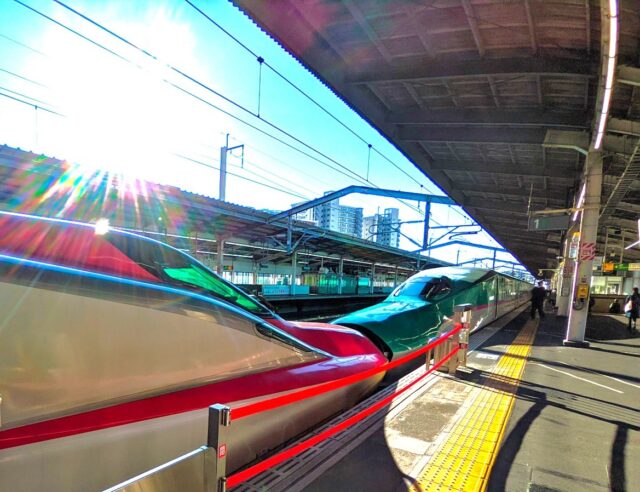
Apps to Navigate Public Transport in Japan
There are a number of apps that can help you out, when you need to find your way inside the cities or across the whole country:
- Google maps – of course you can’t visit Japan without it. It works pretty well in Japan. I haven’t noticed anything else, except some very small issues – it may not be able to locate you in very crowded stations (Shinjuku station, anyone?). Other than that, it is quite reliable and gives accurate information on train and bus routes and times.
- Japan Travel by Navitime – the app is very accurate and provides detailed information on which transport you need to take with the price breakdown. You can also indicate here, if you have any of the travel passes, whether JR Pass, any of the regional passes (such as Shikoku rail pass or Hokkaido rail pass) or any of the city specific passes (such as Osaka Amazing pass or Tokyo day pass). The only issue with the free map is that it won’t tell you the list of stops on the way – will just say 5 stops for instance and you can’t see which ones. As this is an official app and, hence, more accurate, we used this app in combination with Google maps to double check the former’s information. The app also provides some interesting walking itineraries and guides, but we didn’t really use the app for those purposes.
- Citymapper – while this app won’t be helpful, when travelling across the country, inside bigger cities it is a great resource. It provides a great user-friendly option for finding transportation options.
Train Travel in Japan: Unmissable Experience
If you’ve heard people rave about Japan’s trains, believe the hype. The system works like a clockwork – unbelievably punctual and efficient. You’ve got everything from high-speed Shinkansen to regional trains to super cute sightseeing trains to metro lines. We’ve taken dozens of trains in Japan (I think it’s even in the hundreds, I lost count), but only remember one case, when a train was late – shocking I know 😊
Also check out my tips on deciding if Japan Rail Pass is worth it for you and
Bus Travel in Japan
If you’re not in a rush or do like bus travel (not entirely sure, if anyone does it over trains, but who knows? 😊), intercity buses or “highway buses”, as Japanese call them, can save you quite a lot of money. I can’t say that we took many buses in Japan, because you know, there are so many trains.
However, if you do choose buses, you have several bus companies traversing the whole country, including Willer Express, Nohi Bus, VIP Liner, JR Buses. We have used Willer Express a few times, but not on routes longer than 3 hours.
The highway buses are comfortable enough, legroom is fine and they run punctually. Most buses are equipped with toilets or make stops along the way. On most of them you will also find Wi-Fi and the power outlets for charging your devices.
Most buses allow to take one piece of luggage per passenger. However, this may differ according to the route and bus company. Of course, you can take your smaller bags onboard, however, the overhead space didn’t seem too big, so backpacks are fine but not cabin bag sized suitcases.
Bus terminals are quite often located near train stations – like in Kanazawa, Takayama and Kumamoto in our experience. However, in bigger cities, there may be a number of bus terminals. Therefore, double check which one is your bus departing from.
Purchasing Bus Tickets in Japan
Highway buses can get crowded on some routes and during the high seasons, weekends and holidays. Therefore, while you could get some bus tickets before departure at the bus terminal, if you are travelling during peak times, make sure to book in advance.
You have several options to buy the highway bus tickets:
- Book online on the relevant bus company websites. I didn’t like Willer Express website much.
- Japanese ticketing websites, such as Japan Bus Online and Kousokou: I booked on Japan Bus Online, because I was able to search all available buses. However, payment process wasn’t very straightforward. It took a while to manage to buy, because the website was signing me out.
- International companies, like 12Go and Trip.com don’t have as many options available. However, if you, like me, have issues with Japanese websites, you might consider them.
- You can also buy bus tickets at the bus terminals or at the machines inside convenience stores. However, tickets on some routes, like Kanazawa to Shirakawago or Shinjuku to Kawaguchiko sell out, so you should better book in advance.
I have heard that on some routes you could get tickets without seat reservations, however, I haven’t encountered this. On Willer Express buses our seats were assigned and I didn’t see an option to book otherwise.
Bus Passes in Japan
There aren’t many options for bus passes in Japan. There’s only one major one by Willer Express and a few regional ones:
- Japan Bus Pass – 3, 5 and 7-day Pass offered by Willer Express. You can use any days (not necessarily consecutive) over 2 month period.
- There are also a few bus passes covering certain region. Like there’s a Hokkaido bus pass and a Kyushu one.
Lately, there were premium buses introduced – these are supposed to have the feel of the Business class and allow you relaxation. They are also quite expensive, often the price of Shinkansen tickets or even more. I am not convinced but who knows, this being Japan, maybe even this could be worth the price.
Transport in Japanese Cities
IC Cards (Suica/Icoca/Sugoca and more)
You will be using IC cards inside the cities most of the time with very rare exceptions. If you have an iPhone, you can even load Suica directly into Iphone. But tough luck for Android users, unless your phone was bought in Japan (which seems pretty much impossible for tourists).
Each city has differently named cards, but they all work interchangeably anywhere in Japan:
- In Tokyo, it’s Suica card – green with a cute penguin on it.
- There’s also Pasmo also originating from Tokyo.
- In Kansai and Hiroshima you will find ICOCA
- In Fukuoka it’s called SUGOCA.
- In Hokkaido it’s Kitaca.
- Nagoya issues Toica.
Whatever their name, these cards last 10 years.
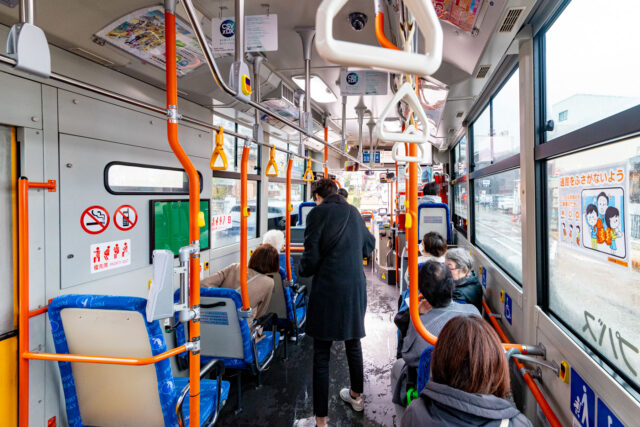
The cards can be purchased at major JR stations, but not every station has them. When purchasing you pay 2000 yen with 500 being partially refundable deposit, while the rest is credited to the card. You can get a refund on unused balances, but there’s a small fee. On the other hand, you can use your suica at convenience stores too, so there’s absolutely no need to leave any balance.
There are also a tourist options, which only last a 28 days – like Welcome Suica. You can also order Welcome Suica online before arriving to Japan and then pick your card up at the airport upon arrival. If you never plan to visit Japan again, this could be a viable option, as the card does not require a deposit, like normal Suica does and expires within 28 days. If you, on the other hand, wish to plan another trip, go for the normal Suica.
One big point about charging the IC cards at the ticket machines is that cash is necessary. We couldn’t charge a few times, when we ran out of cash.
You use Suica/Icoca by tapping in while getting into metro or getting on a bus and tapping out, when arriving at your destination. There are rare occasions, when tapping out is not needed, but as a rule of thumb, you should.
Metro in Big Japanese Cities
Most big cities in Japan have comprehensive subway/train networks, in addition to many bus routes.
- Tokyo: Nine Tokyo Metro lines, four Toei subway lines, JR lines – it’s quite an octopus of a metro network. We stayed near Yamanote line station once and near 3 different subway stops a second time. As long as you have access to trains, you are good to go anywhere.
- Osaka: has a relatively compact, user-friendly system. We stayed near the Midosuji Line both times and it conveniently got us everywhere.
- Kyoto has only two subway lines – so you’ll rely on buses more.
- Fukuoka, Nagoya, Hiroshima: they all have solid, manageable networks.
Fragmented Metro/Train Systems
Metro systems in Japanese cities work quite differently from what most travelers are used to. In many countries, the metro network is run by a single operator, and you can transfer between lines freely on one fare. In Japan, however, things are more complex. Many metro and train lines are operated by different companies — especially non-JR lines — which means transfers often involve passing through separate ticket gates.
If you’re traveling from Shinjuku to Asakusa, you’ll likely take the Shinjuku Line and transfer to the Asakusa Line. Since these are operated by different companies, the fare increases slightly compared to a single-line journey.
A more significant difference can be seen going from Kichijoji to Akasaka – using the Chuo Line and transferring to the Marunouchi Line – where the change in operators leads to a noticeably higher fare than, say, going from Kichijoji to nearby Shinjuku on the Chuo Line alone.
This fragmented system can seem confusing at first, but the best approach is not to worry too much about it. Just remember to tap your IC card in and out whenever required, especially at transfer gates between operators. The system will calculate your fare automatically, so you can focus on getting where you need to go.
This system also is the reason, why various subway passes may not be worth it. For instance, Tokyo subway 24, 48 or 72 hour passes don’t include Yamanote line, which is often needed. I will get into details of each of these passes in the respective city guides.
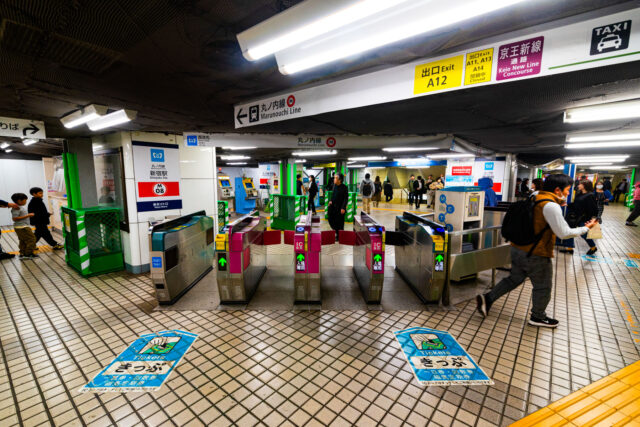
Navigating Metro/Train Stations in Japan
On top of this, there’s often quite a lot of walking involved to transfer between lines. Shinjuku is one fine example of this mass. Slightly less but the Osaka station/Umeda in Osaka is a maze as well. Signage can be unclear, and sometimes even leads you on roundabout routes.
Another hassle is finding the right place. You can get lost in the octopus shaped metro stations sometimes. Make sure to note on your map, specifically which exit do you need and start going to it immediately from the platform. Otherwise, you might walk in circles.
While I am not the biggest fan of the signage in Tokyo metros especially, it’s still quite manageable, just leave a little time for getting lost and enjoy the experience 😊
Metro Operating Times
Most metro lines stop running by midnight. If you are far from your hotel in the late evening, make sure to catch the train before it’s too late, otherwise taxis can cost you a fortune. I have heard from people how they hung out, wherever they got stuck, till morning, because taxi would just be too much.
Rush hours in bigger cities can be quite intense, however, we never ourselves encountered anything similar to what we have seen on some videos with platform attendants pushing people into trains. Either we just never ended up at the most crowded place at the wrong time or this no longer happens.
Buses in Japanese Cities
Not being a fan of buses, I only used them, whenever metro/trains were not available – in places, like Kanazawa, Kyoto, Nikko, Kawaguchiko and a few smaller towns. They provide little information in English, and may be a bit difficult to navigate.
Buses in Japan generally work better than in many other countries, but they can still be tricky. English information is often limited or missing entirely, and real-time updates are rare. You might find yourself at a stop with little more than a timetable in Japanese and no clear idea if the bus is on its way or already passed.
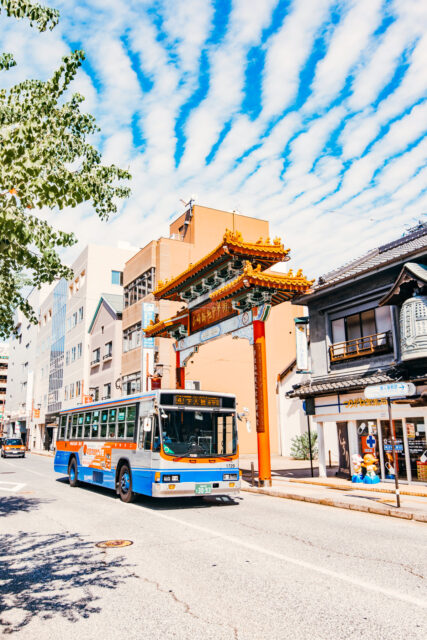
Punctuality is another issue – especially in Kyoto. Traffic can substantially slow things down, and buses tend to get stuck, particularly in the evenings. Even short rides can take forever, and long waits aren’t uncommon. We’ve suffered a few times, so decided to just walk wherever possible, even longer distances. We had a few moments of just standing around wondering if we were in the right place. Kanazawa was less hectic, but not always fast or intuitive.
Still, compared to buses in many countries, Japanese city buses are clean and safe. They are also accessible for people with disabilities. If you’re not in a rush, or you’re in a place with no metro, they’ll get you where you need to go… eventually. Just pack a little patience and follow your route on Google map, not to miss your stop.
In most city buses, you board through the rear door and tap in your card. Upon exiting from the front door you tap your card again.
In more rural areas, buses may stop running early or become very infrequent, like one bus per hour. Make sure to check the schedule beforehand. We did have to wait for a bus once for over an hour in Kawaguchiko, simply because they were barely running. One came so full, we couldn’t board. At least, we managed to catch one in the end, although it was crawling like a turtle.
How to Get to the International Airports
Japan’s international airports are well-connected to the cities. You can find cheapest and more expensive options. You hardly ever need to book them in advance, unless you find a huge discount.
How to Travel from Natira Airport to Tokyo by Public Transport
- Narita Express (N’EX): Fast, but expensive. Gets you to Tokyo Station in under an hour.
- Keisei Skyliner: If you’re heading to Ueno or north Tokyo, this train is faster, although still very expensive.
- Keisei line trains: They take longer – up to 1 hour and a half, but they are far cheaper than the above options. You can simply use your Suica for this without purchasing a separate ticket.
- Limousine Buses: More comfortable with luggage, but vulnerable to traffic. With Tokyo being so busy, I wouldn’t risk taking it, unless you have too much luggage and the bus arrives near your hotel.
How to Travel from Haneda Airport to Tokyo by Public Transport
- Keikyu Line: This line gives best access to other metro lines and gets you to the city center fast. It’s also the cheapest option and can be taken using Suica.
- Monorail to Hamamatsucho, then switching to JR Yamanote line: this is still quite a fast option and not much more expensive than the previous one.
How to Travel from Kansai Airport to Osaka and Kyoto by Public Transport
- Haruka Express: The fastest option from the airport to Kyoto or Osaka taking about 45 minutes to Osaka station. However, it can be quite costly. There were discounted tickets with online purchase at times, so you may want to check.
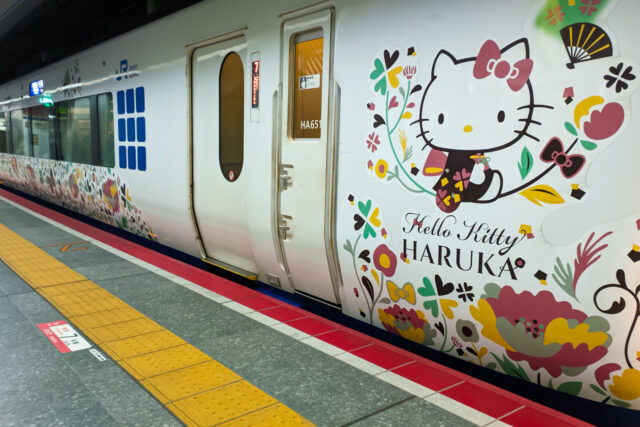
- Limousine buses: They are available for those with a lot of luggage. But they are also an expensive option.
- Nankai line: The best option for budget travel. There’s a slower train taking up to an hour to get to Namba, while Limited express takes about 40 minutes, with relevant surcharge.
Japan’s transport system works like a clockwork, it’s organized, punctual and accessible. Traveling in Japan is always a charming experience. Which is your favorite transport?
Eki Stamps at the Stations in Japan
Most train and metro stations, as well as some bus stations and sightseeing trains offer a stamp depicting the location you are at. These stamps are very cute and collecting them is a lot of fun. Look near the ticket entry gates. If you don’t find them, ask the station staff. They are sometimes holding it inside the booth.
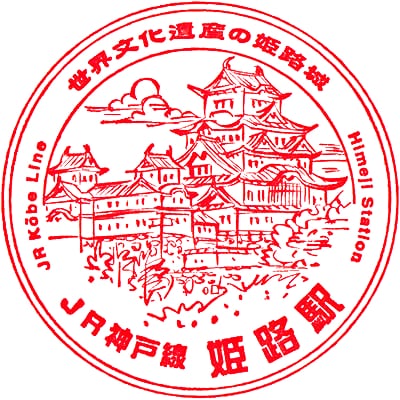
I carried my notebook to collect all stamps together. But normal notebooks with lines didn’t work and the stamp books I found were plain, so we decided to create our very own ultra‑cute stamp book. We hand‑picked over 100 photos – from Tokyo’s neon streets to Shirakawago’s mountain charm, Mount Fuji’s majesty to hidden shrine details. The transparent layout keeps your stamps and notes crisp and visible, while letting the scenes beneath shine through.
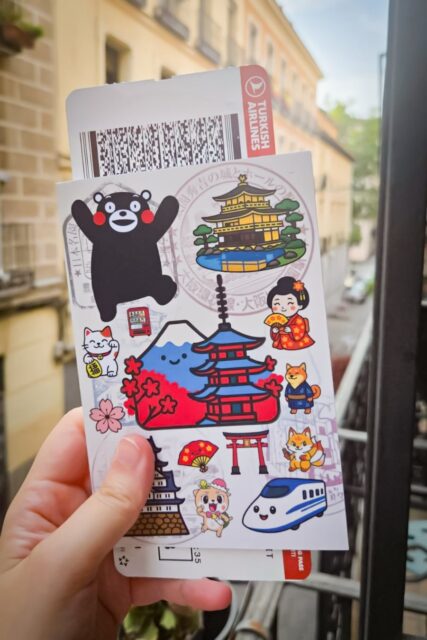
See also:
My full guide on Japan Rail Pass

Hello I am Ket,
A traveler, planner, and sweet tooth behind Hit the Road Ket.
Travel isn’t just my passion – it’s a lifeline for my mental health. Having lived in three cities and explored 60 countries (and counting!), I created this blog to share my experiences, smart tips, and itinerary advice with fellow travel lovers. I’m all about making the most of limited time, finding scenic routes, and turning every trip into something memorable – coffee in hand, of course.
